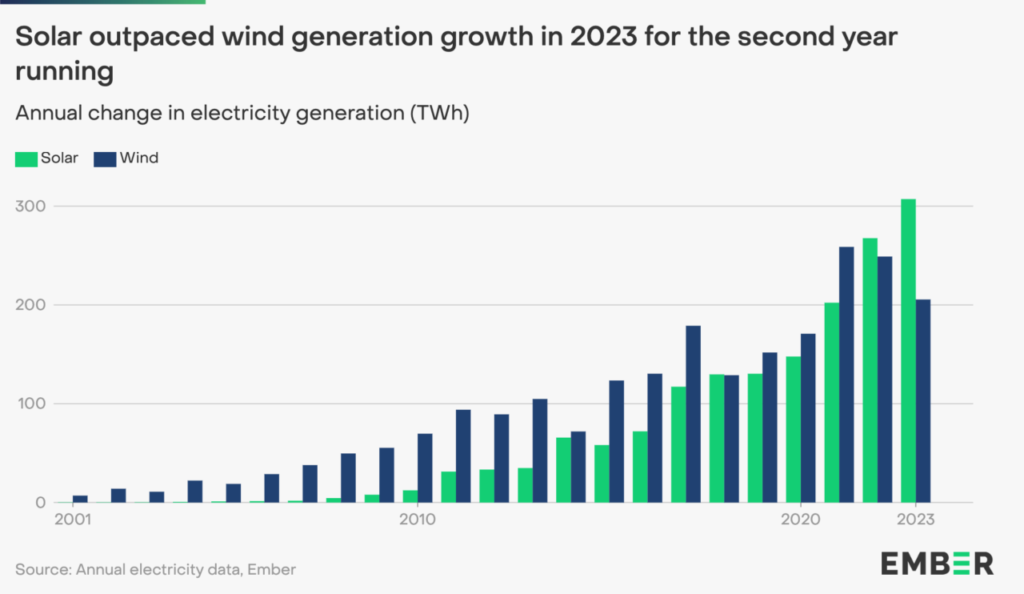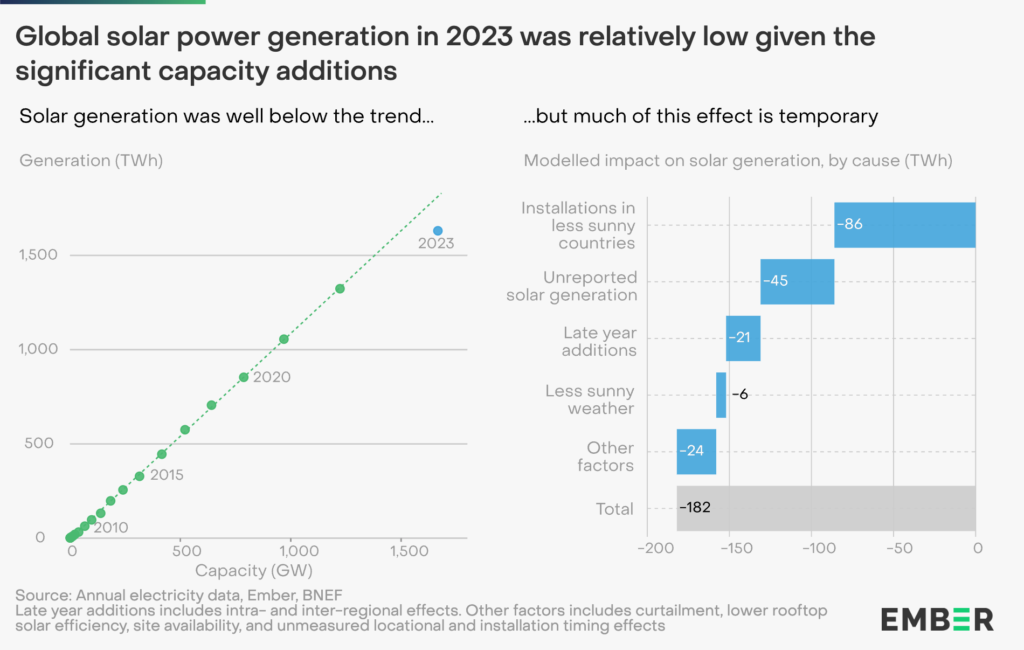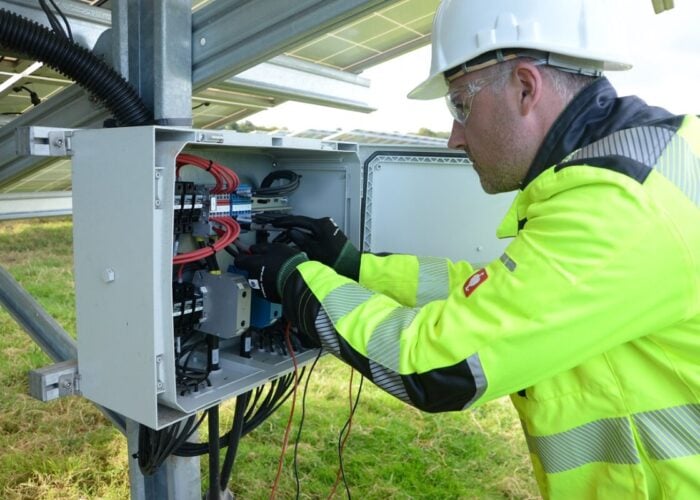
For the second year in a row, global growth in solar PV generation capacity outpaced that of wind in 2023, according to energy think tank Ember.
Ember’s fifth annual Global Electricity Review revealed that solar generation grew by 23% in 2023, the fastest-growing electricity source for 19 years in a row. With 1,631TWh, solar PV accounted for 5.5% the global electricity mix, up from 4.6% in 2022. Solar’s generation growth in 2024 is expected to be even larger due to a record surge of installations towards the end of 2023.
Try Premium for just $1
- Full premium access for the first month at only $1
- Converts to an annual rate after 30 days unless cancelled
- Cancel anytime during the trial period
Premium Benefits
- Expert industry analysis and interviews
- Digital access to PV Tech Power journal
- Exclusive event discounts
Or get the full Premium subscription right away
Or continue reading this article for free
Combined, solar PV and wind generation growth met 82% of last year’s global electricity demand growth.
Growth in solar PV and wind pushed global renewables electricity generation past 30% in 2023, a first according to the report. China was the main driver for that surge, as it contributed to more than half (51%) of the additional global solar generation last year. Overall, China, the EU, the US and Brazil accounted for 81% of solar power growth in 2023.
“The renewables future has arrived. Solar in particular is accelerating faster than anyone thought possible,” said Dave Jones, global insights programme director at Ember.
Among the four trends highlighted in Ember’s report that will shape the electricity transition in 2024, solar PV is at the forefront of the energy revolution and leading the way. Earlier this year, BloombergNEF forecasted solar PV to add 574GW of capacity in 2024, up from the 444GW added in 2023.
With an abundance of supply capacity – a Rystad Energy report from last year highlighted 40GW of modules sitting in European warehouses – and a fall in solar panel prices, solar is expected to further increase its generation in 2024 as added capacity increases too.
Furthermore, delivering the pledge made during COP28 last year of trebling renewables capacity by 2030, would bring renewables production capacity to 60% by the end of the decade.
“Given the excess of supply, and the rapid drop in battery storage costs, solar is increasingly limited only by how fast it can be connected to the grid,” reads the report.
Moreover, 33 countries have now a more than 10% share of total generation from solar, including Chile (20%), Australia and the Netherlands (both at 17%), while the US state of California in itself has a 28% share of solar PV.
Despite the fast pace growth of solar PV in terms of installed capacity, its generation has been underperforming in 2023. Among the issues for that shortfall is due to the location of where solar was added and generating with both China and the EU receiving fewer sunlight than global standards.

Another key aspect that needs to be addressed, is the increase in curtailment occurring in certain markets, particularly in Japan, the Netherlands and Australia.
Although demand growth slowed down in 2023 – with a 2.2% increase that was below average in recent years – it is expected to increase in the coming years. Half of the demand growth in 2023 came from electric vehicles, data centres, heat pumps, electrolysers and air conditioning. These five technologies are expected to accelerate the growth in electricity demand in the coming years, yet overall energy demand will decline due to electrification being more efficient than fossil fuels.
In 2024, Ember forecasts clean energy generation – led by solar PV (600TWh) and wind (289TWh) – to add over 1,300TWh, far higher than the demand growth which is forecast to be 968TWh. The accelerated growth of clean energy could lead to a 2% decrease in global fossil fuel generation in 2024.






